Today I’m sharing a crowd favorite, and by crowd I mean a small army of 7 and 8 year olds. Year after year, this is hands down one of my students’ favorite fall activities and it also happens to be an extremely effective way to learn and review adjectives, nouns, verbs, adverbs, and other parts of speech. It makes for great reading and singing practice too. Yep, there is singing is involved…if I lost you already, stick with me. I am no singer whatsoever, but trust me, your kids won’t mind in the slightest.
The activity is called “Farmer in the Dell” because it involves the catchy children’s tune by that name. If you haven’t heard the song before there’s a video below, but it’s the one that goes: “The Farmer in the Dell, The Farmer in the Dell, Hi-Ho the Derry-O, The Farmer in the Dell.” Funny, I always thought it was “Dairy-O” (I mean, they’re singing about a farmer) but I stand corrected by Wikipedia.
First thing you need is this poster. You can easily get it enlarged at a print shop, or I’ve also got you covered if you want to go old school (with this resource, I’ve included text and images that can be cut out and glued onto chart paper if you wanted to replicate the same poster).
After teaching/reviewing what each part of speech on the poster means, we work together as a whole class to brainstorm examples of words for each part of speech. For the nouns and prepositional phrases, I usually have my kids think of characters and places from recent stories that we’ve read together in class. Just another opportunity to make text connections! At the time of this particular lesson, we had just read The Three Billy Goats Gruff and cultural adaptations of Cinderella, which you’ll see reflected on this student’s recording sheet below.
I write down their ideas on the larger poster for the whole class to see. Once we have at least a few words under each category, I have everyone close their eyes to build the suspense (plus it limits the blurting out when kids get excited about what words are being chosen). I choose a student to pick a number based on the number of words listed in that category. For example, if there are 4 verbs, I’ll say, “Pick a number 1-4.” If there are 5 adjectives, it’s “Pick a number 1-5,” etc. I stick a little chick magnet (ha! hopefully that got at least a smile out of someone) next to each word for the number they choose. As you can see in the photo below, the student chose the number 3 for verbs, so I put the chick next to “sings” because that was word number 3.
I feel like I should now take a quick moment to address the farmer hat, haha! Any time we do this activity again after I first introduce it, all I have to do is throw on the hat. I don’t even have to tell them what we’re about to do…without fail, I always get huge smiles and a resounding “Yay!!! Farmer in the Dell!” or “Yesssss!” from the kids. The hat is just like Pavlov’s bell, and it’s little things like this that make it more fun and are a big deal to the kids. But if you don’t have anything on hand that a farmer might wear, they won’t know any different and will still love the activity just the same of course!
Once all the words have been selected, it’s finally time for their favorite part! As a class, we sing the song “The Farmer in the Dell,” except we change the words to match the silly sentence they have created with their parts of speech. The sentences, while grammatically correct, are often ridiculous (in a Mad Libs sort of way) and the kids find it hilarious.
Here’s a video clip from when I first introduced the activity to one of my classes. No judgment on my singing voice, please!
We come back and do this activity together again as a whole group a couple more times in the weeks to follow. Once they’re very familiar with how it works, Farmer in the Dell becomes an instant favorite literacy center.
They can do the activity just like we do with the whole class, except now they can do it independently, with a partner, or in a small group. Or as a variation, sometimes I also provide them with words strips to sort by part of speech. They either sort the words by placing them under the correct category right onto their paper, or sometimes I have them form the sentences on their desk and then write down the words on the lines to show what songs they have created.
These same word strips can also be used as a teacher’s word bank or cheat sheet during whole group instruction. Usually I have the kids be the ones to brainstorm the words for the song, but I have also done it where I provide them with certain words and they have to figure out which part of speech they are and where to sort them on the poster. It’s a good way of assessing whether they can identify new words by their part of speech, and it often introduces them to some new vocabulary as well.
An additional way to switch things up is to use circle maps prior to going straight to the poster. This works well when I want to focus on one or two specific parts of speech, or if I notice there is a particular part of speech that the kids need more practice with.
Students can work independently, with a partner, or in small groups to brainstorm all of the words to write in their circle maps and then come back to the whole group to share. Another way to do it is to put students in teams and give each team a different circle map. Have each group focus on a different part of speech before coming back to the whole group to share.
If you’d like to try this out with your students in your own classroom, everything I’ve shared (the poster, the parts of speech word strips, circle maps, etc.) can be found in my “The Farmer in the Dell” for Parts of Speech: Adjectives, Nouns, Verbs, Adverbs resource, which is available in my shop and also on Teachers Pay Teachers.
Warning: The song may get stuck in your head for a while. But, a better understanding of grammar and parts of speech will also stay stuck in the kids’ heads! And that is something to sing about.

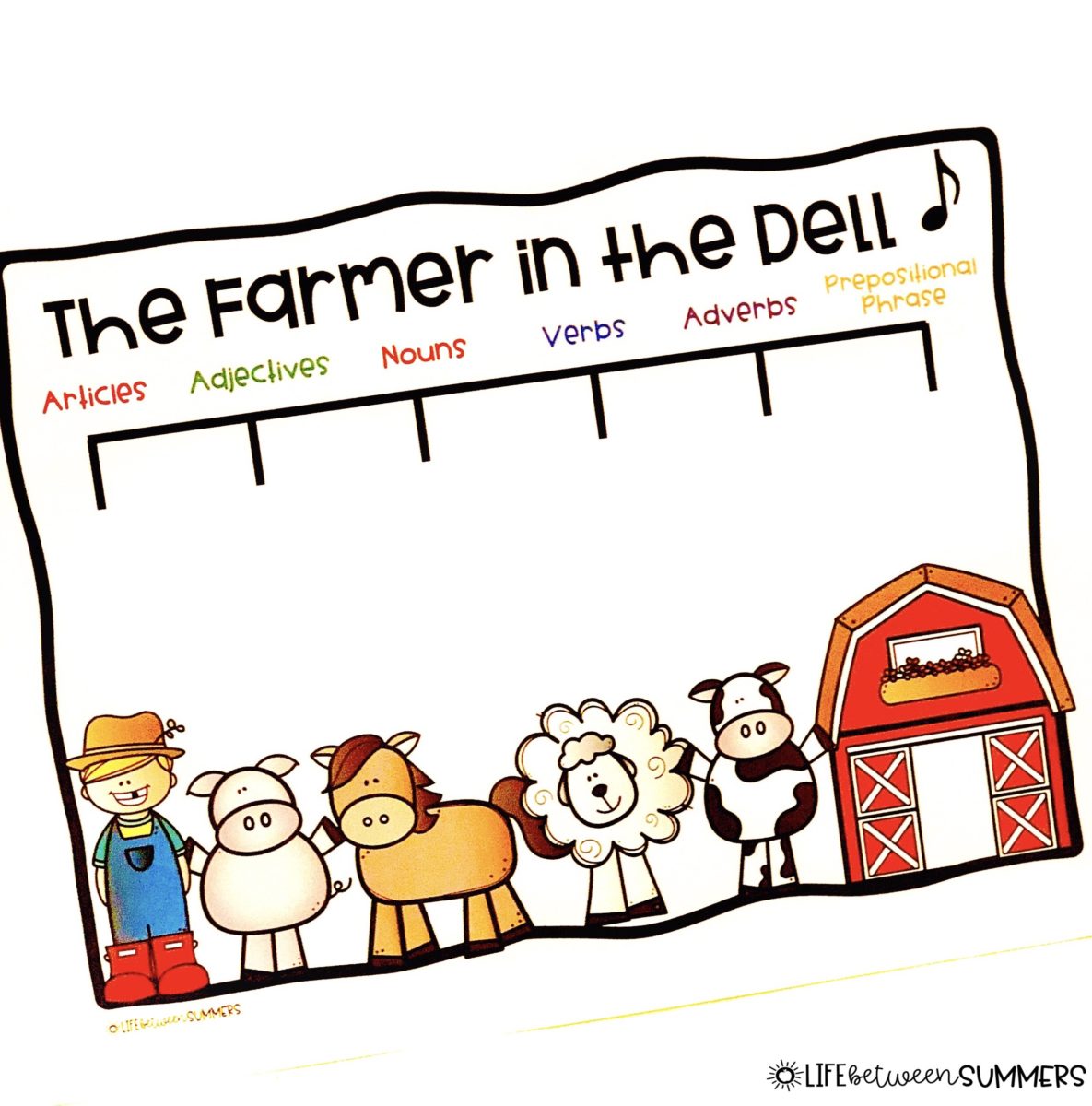
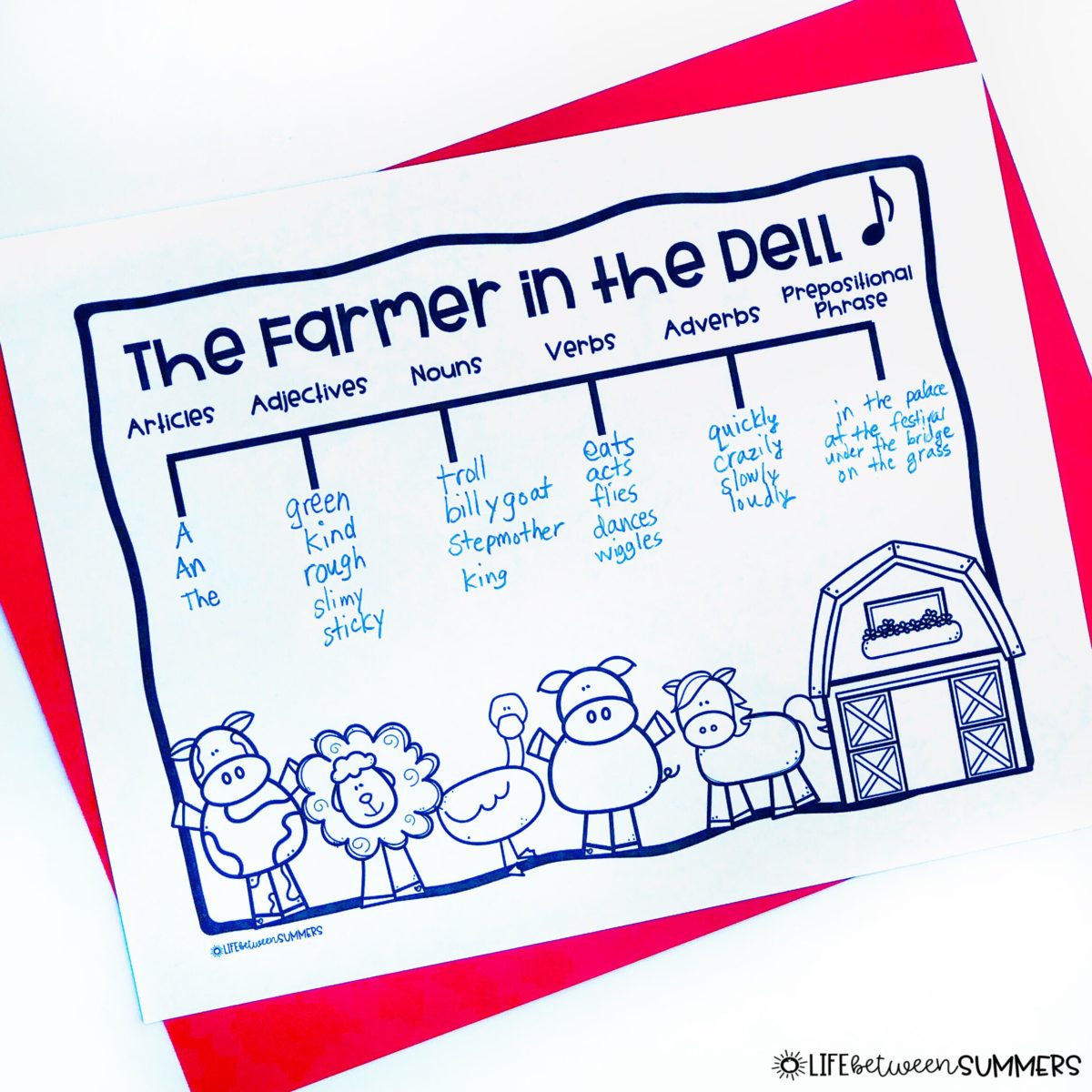
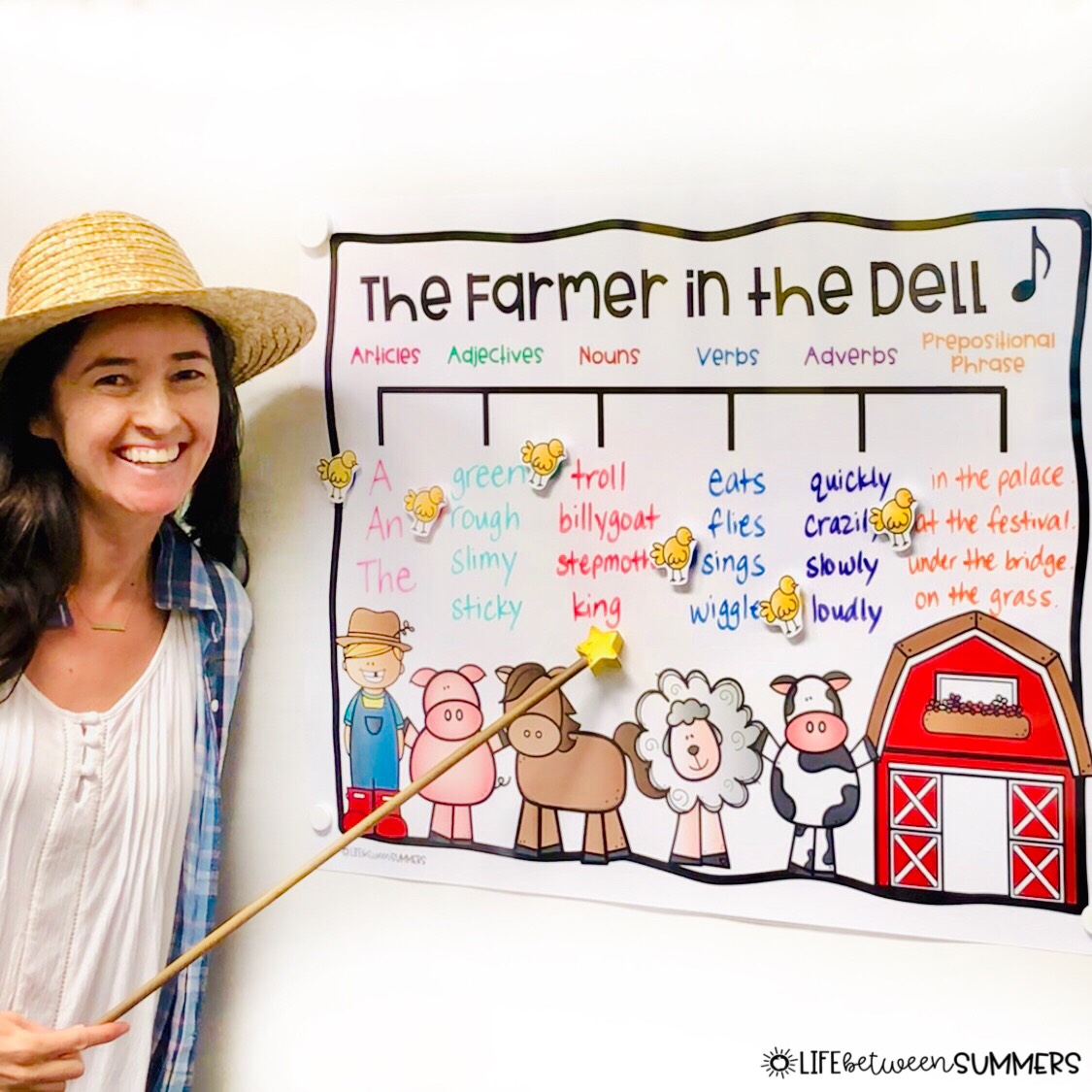

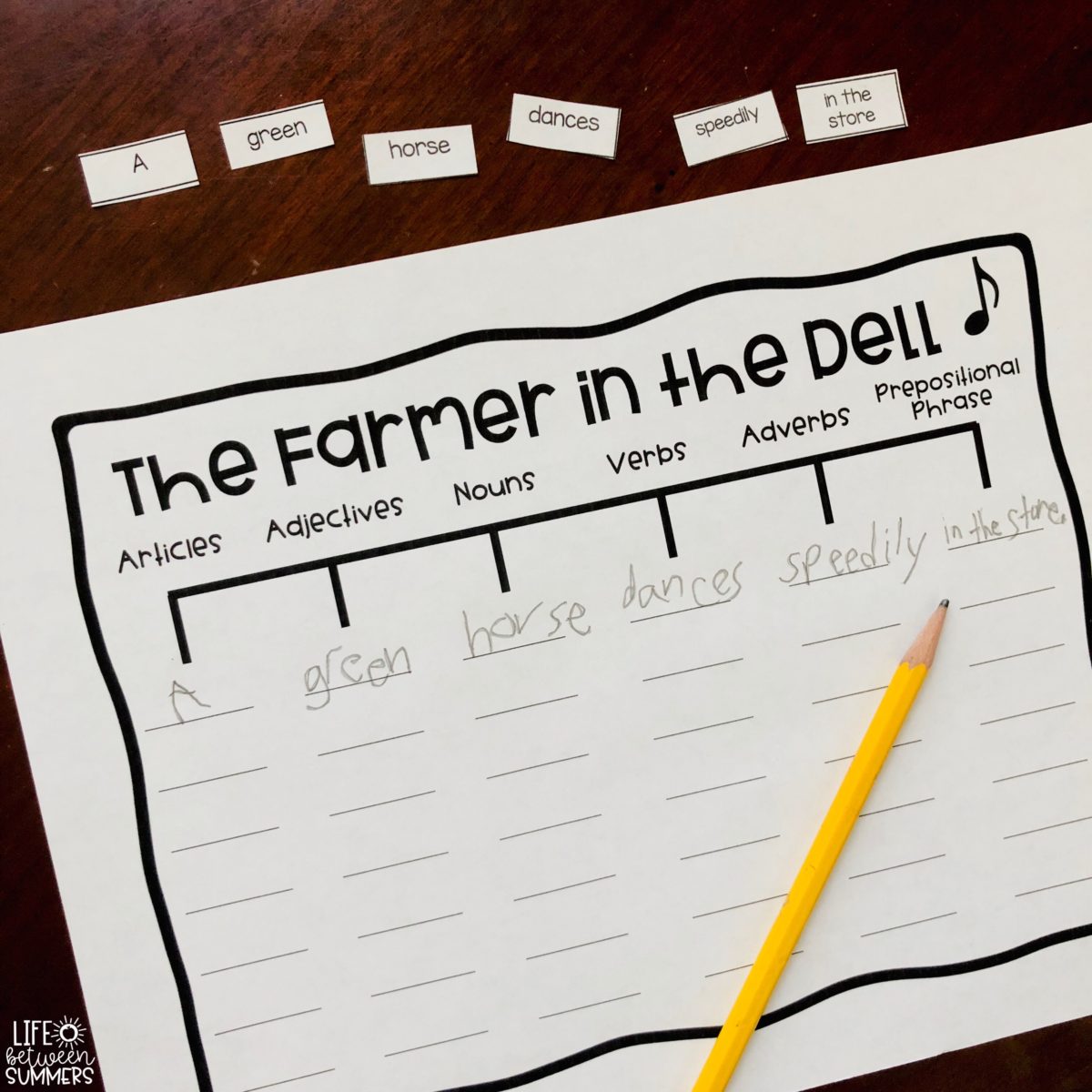
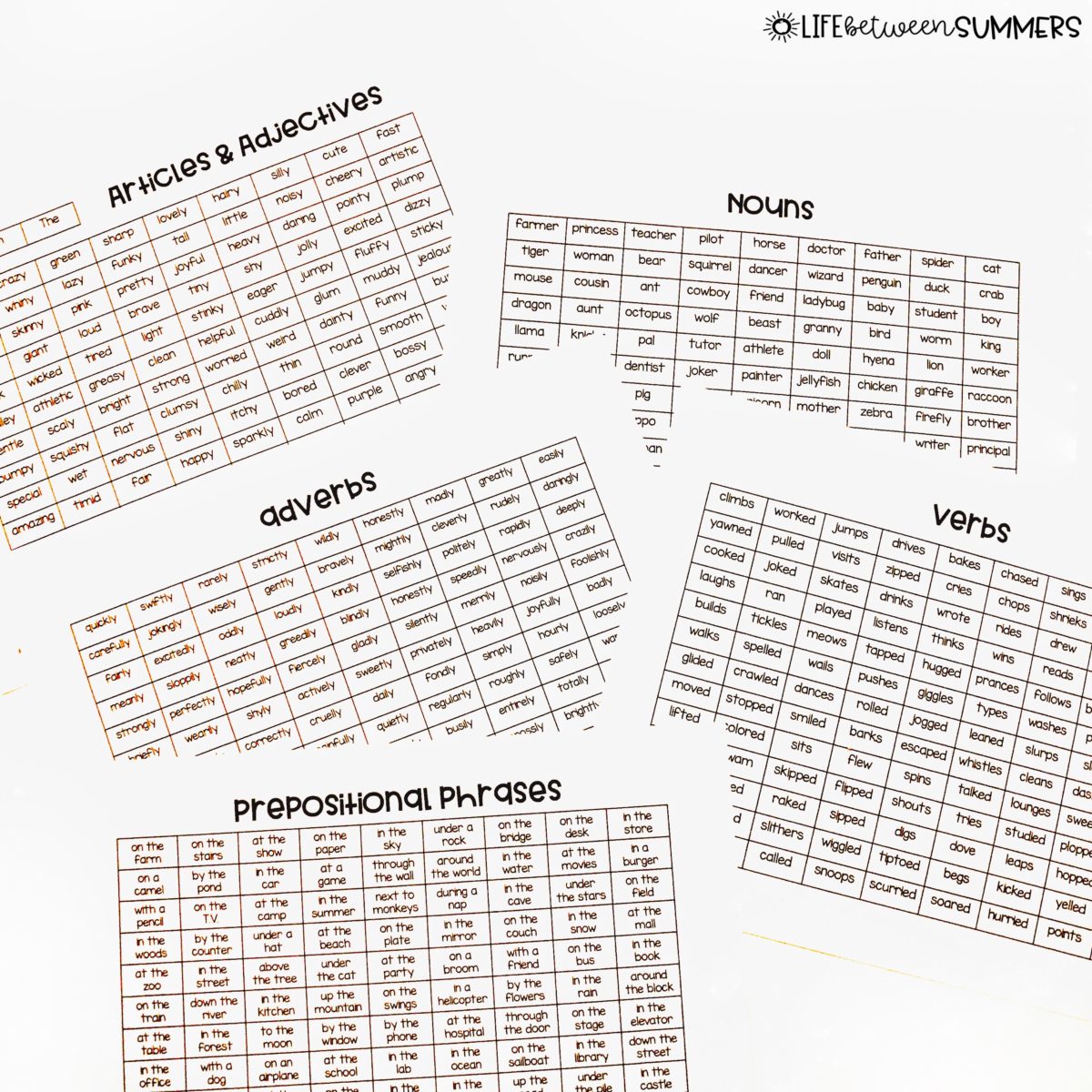
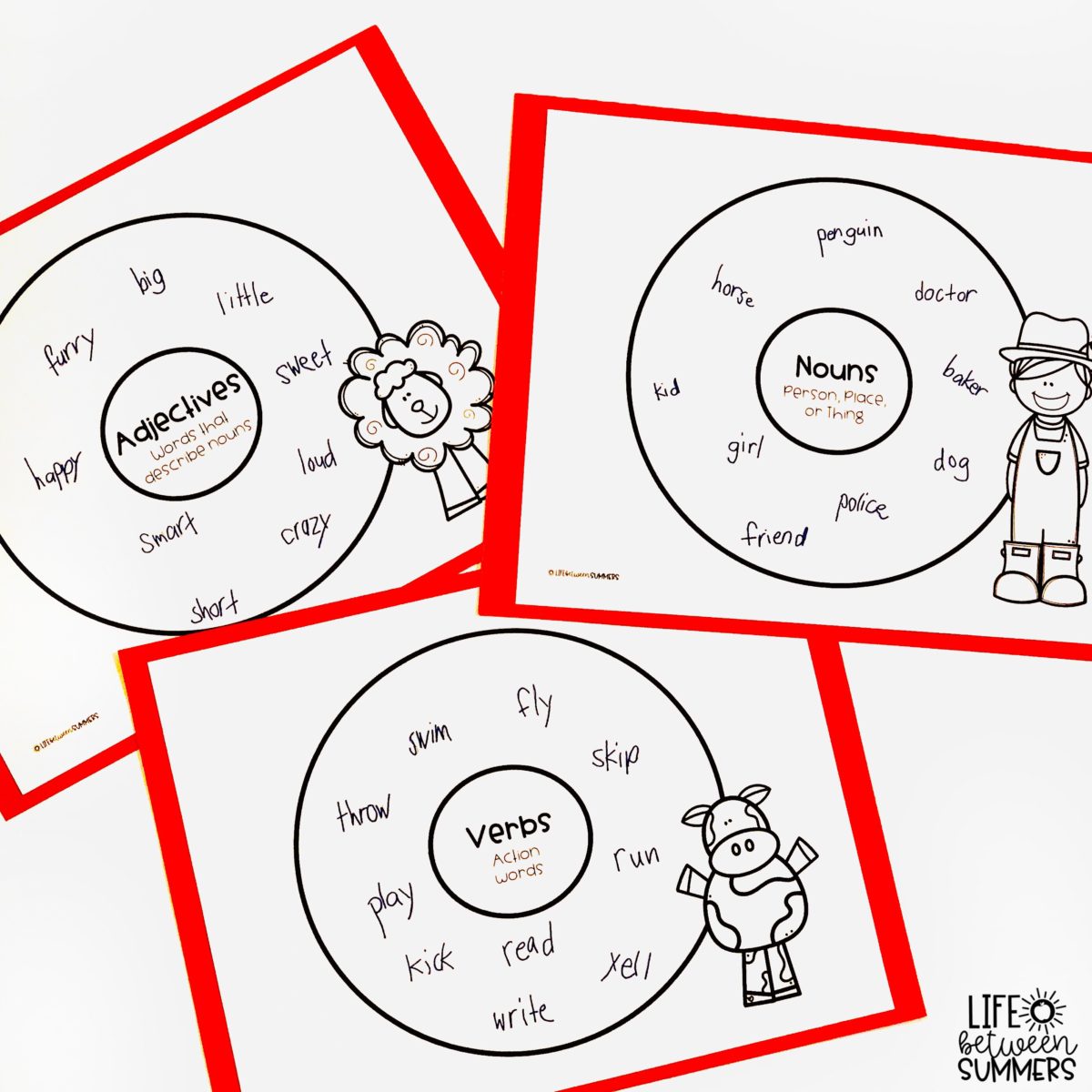
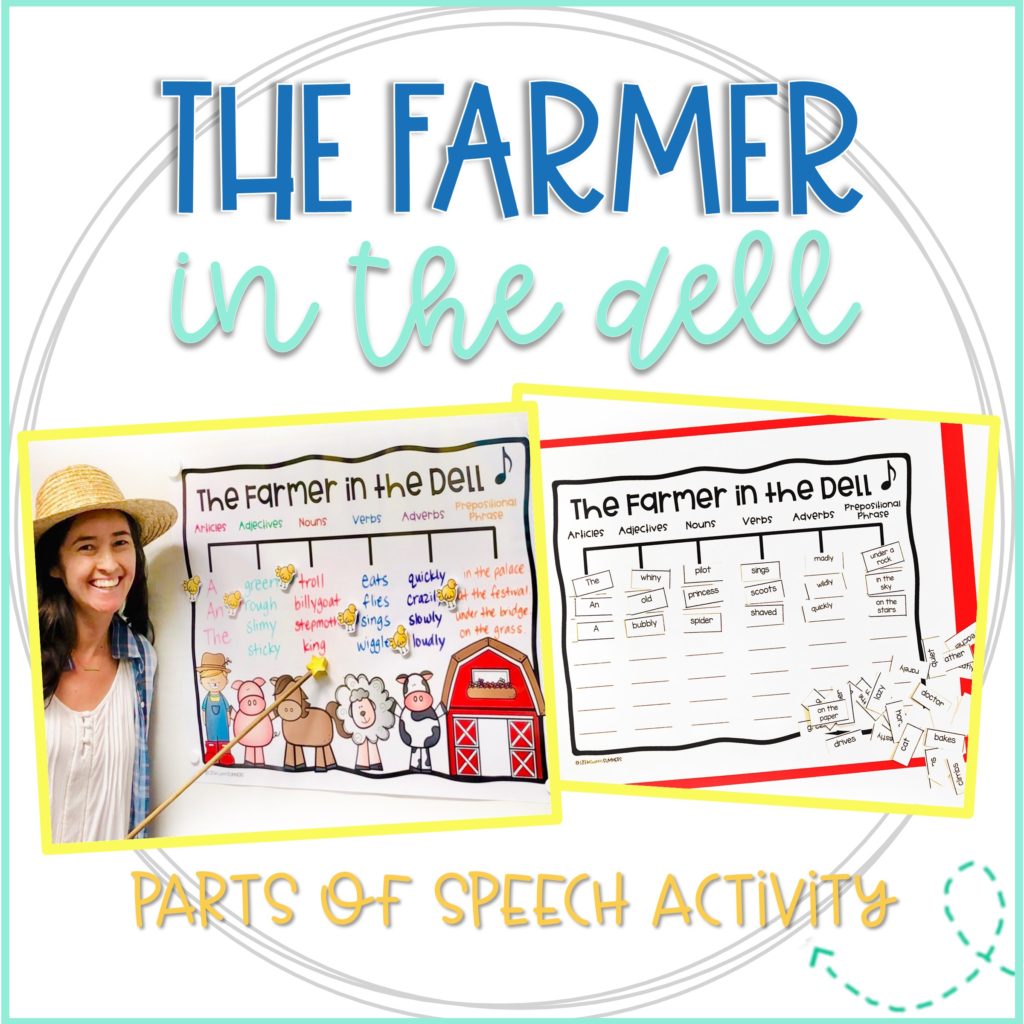

So many awesome activities – thanks for sharing.
This works so well for learning sentence structure! Thank you for such a detailed description!